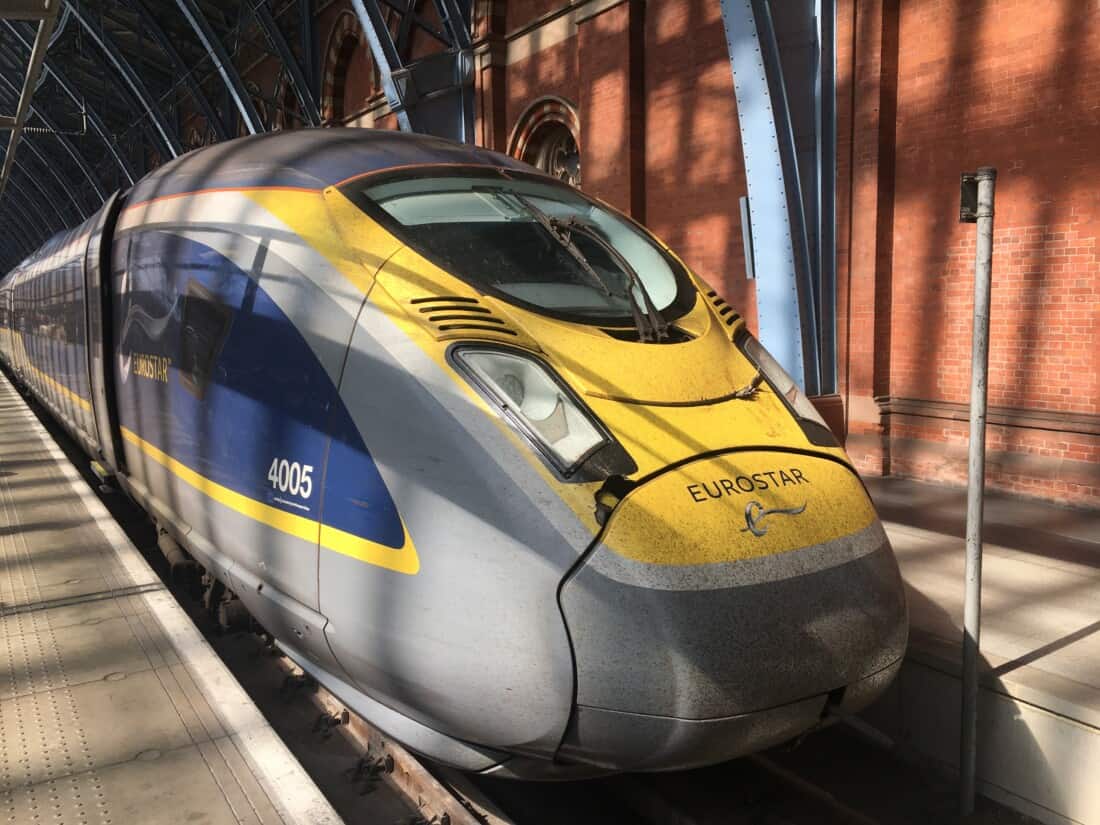Last year, when Interrail passes were offered at half price, my fiancée and I decided to spend a little more and treat ourselves to a first-class pass. It quickly became apparent to both of us that we both wanted to do a trip through the Euro tunnel. So, for the Ascension Day weekend, we planned a trip to Paris and London, travelling between the two cities by train.
This route is served by Eurostar trains, which also connect Amsterdam, Brussels, Lille, Rotterdam, and Disneyland Paris with the British capital. Eurostar itself is a subsidiary of several European railway companies and has since merged with the French Thalys.
Booking
If you want to use the Eurostar with an Interrail pass, you need to reserve a seat for the desired train in advance. The fees for this are quite high, at €40 per person – the Thalys trains, which connect Paris with Belgium, the Netherlands, and Germany, are even more expensive. The reservation fees for the second class are also higher than €30. Sometimes it is possible to purchase individual tickets without an Interrail pass for less money.

For the first class (Premier Class), the savings through the Interrail pass are more worthwhile. Premier Class tickets come in two categories: the most expensive category, Premier Business, includes lounge access, a hot meal, and complimentary drinks onboard. The Interrail first-class pass allows you to travel with the Premier Standard fare, which doesn’t grant lounge access but still includes complimentary (though cold) refreshments.
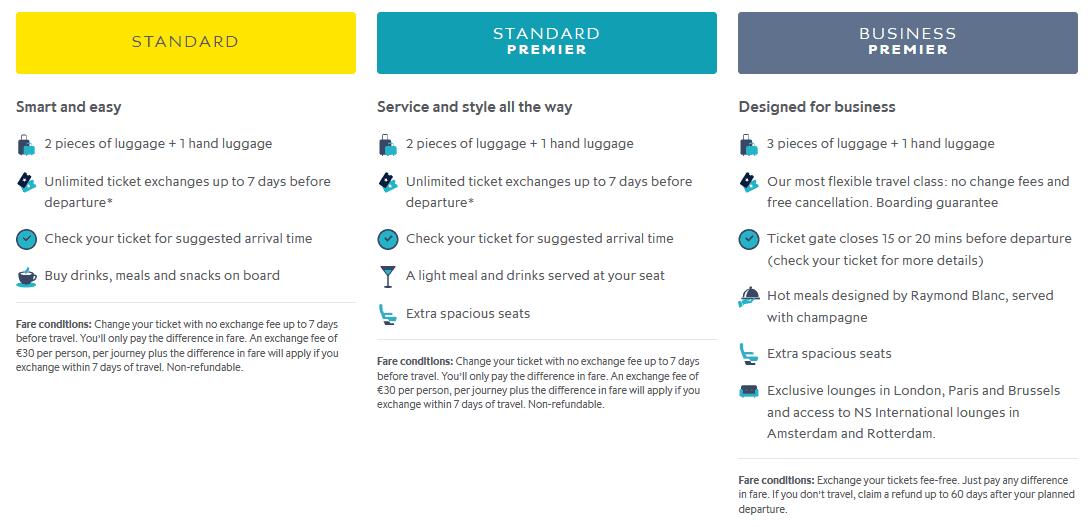
Der Eurostar mit einem Interrail-Ticket
As with almost all international high-speed train connections to/from France, Eurostar’s reservation fees are relatively high. Depending on the route, the prices for the second class range from €30 to €35, with the first class being €5 more expensive.
In addition, there is usually a service fee:
- If you pay directly at the ticket counter in the station, you only pay the reservation price. However, there is a risk that seats may not be available at short notice.
- Booking through the Interrail website or the Railplanner app incurs a €2 fee for each reservation.
- The Belgian railway charges €4 on its website.
Usually, it is not possible to choose a specific seat during the reservation process. However, the assigned seat can be changed at any time using this link.
Boarding in Paris
Boarding at Gare du Nord in Paris takes place on the first floor of the station. Everything is organized in a very tight sequence. First, you pass through the ticket control, then you go to the passport station for exiting the Schengen area, which consists mostly of automated machines. A few meters further, you go through a second passport control, likely for entering the United Kingdom. Afterwards, you join another queue for the security check, where your luggage and hand baggage are scanned.
For Premier Business passengers, there is a fast lane, but it wouldn’t have provided any advantage during our departure. On this Saturday afternoon (departure at 2:13 PM), it wasn’t very crowded, and we only had to wait a few minutes before the security check. The process is more reminiscent of an airport. If you are accustomed to the procedures in smaller European stations, this might surprise you, as you can generally move around much more freely in most European stations compared to, e.g. stations in Spain, China, or Japan.
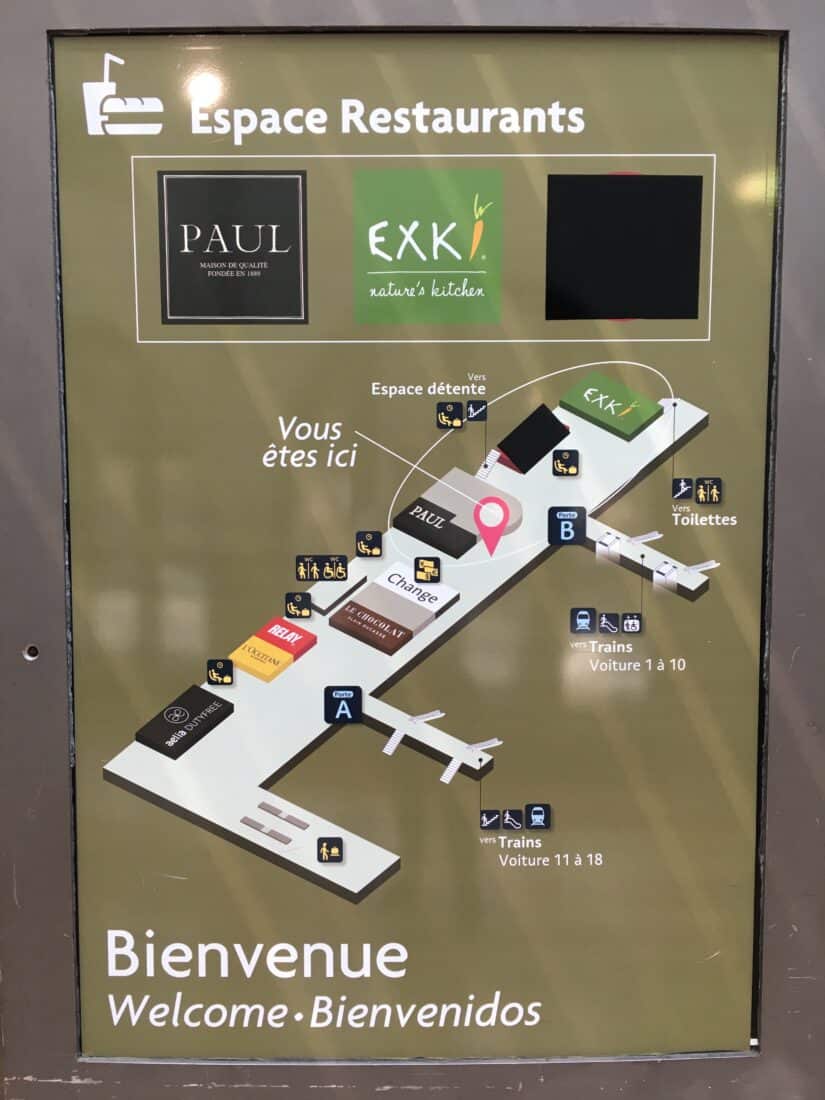
The comparison to an airport also applies to the fact that passengers are gathered in a large waiting area before they open the doors to the platform 20 minutes before departure. The platforms can be accessed from two bridges. The access points display the car numbers that are closest to each bridge. Nevertheless, there was some confusion among passengers on our train because the numbers on the bridge didn’t match the numbers on the doors of the train cars. Therefore, some people were waiting on the wrong bridge.
At the door, a train attendant awaited us, confirming with a glance at our reservation that we were boarding the correct carriage. The most tiring part of this journey was now over.
Cabin
Like most European rail companies, Eurostar’s first-class seating arrangement follows a 1-2 configuration. The seat spacing is quite comfortable, which comes as no surprise. At the beginning and end of the carriage, there are storage areas for larger luggage, while smaller items can easily fit on the overhead shelves. Shades of grey with bright green accents dominate the colour scheme.
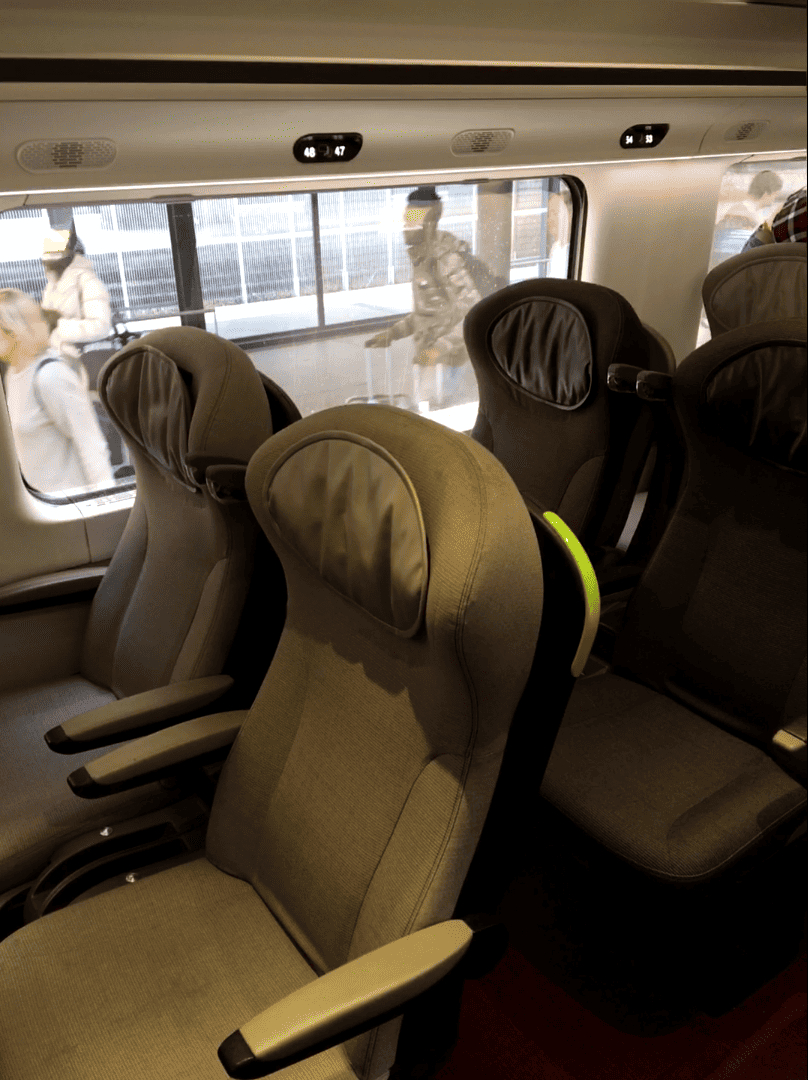
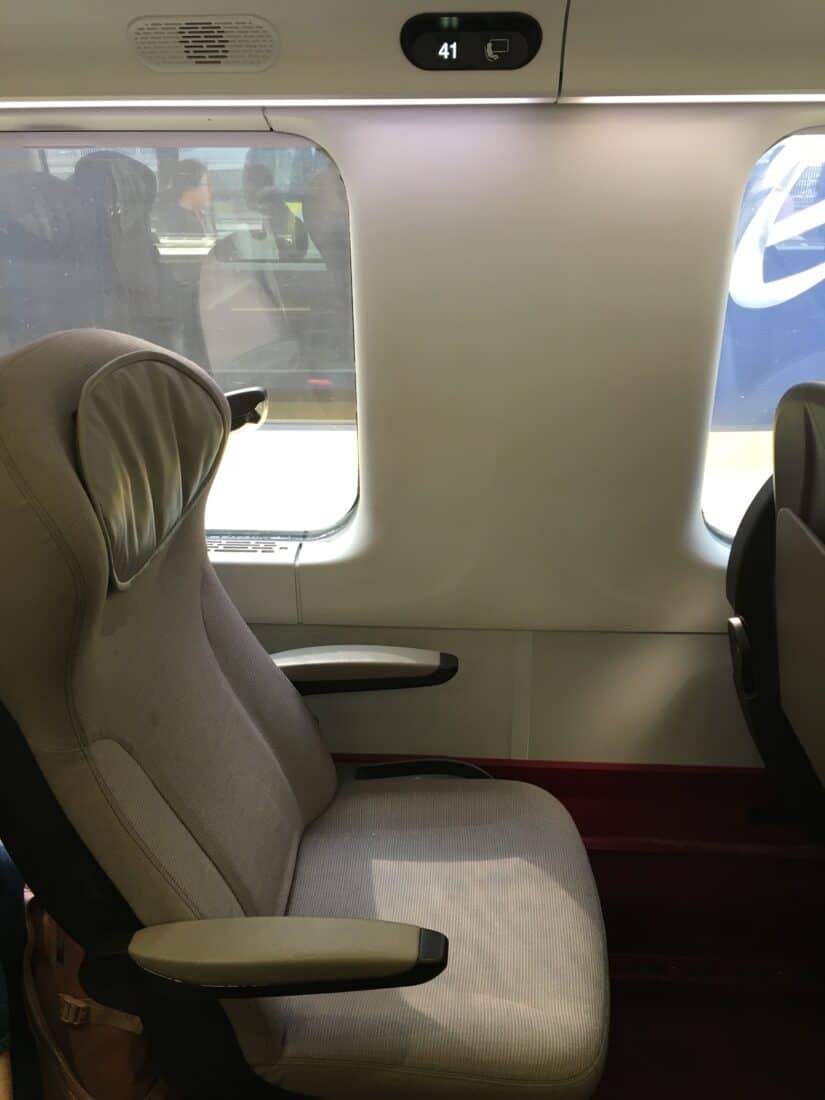
As usual, Eurostar offers regular plane-style seating as well as seating groups around a large table in the middle. Even away from the tables, there is no shortage of storage or workspace options. In addition to fold-out tables, there are also drink holders available. Each seat has access to power outlets (both European and British) and USB ports for charging electronic devices.
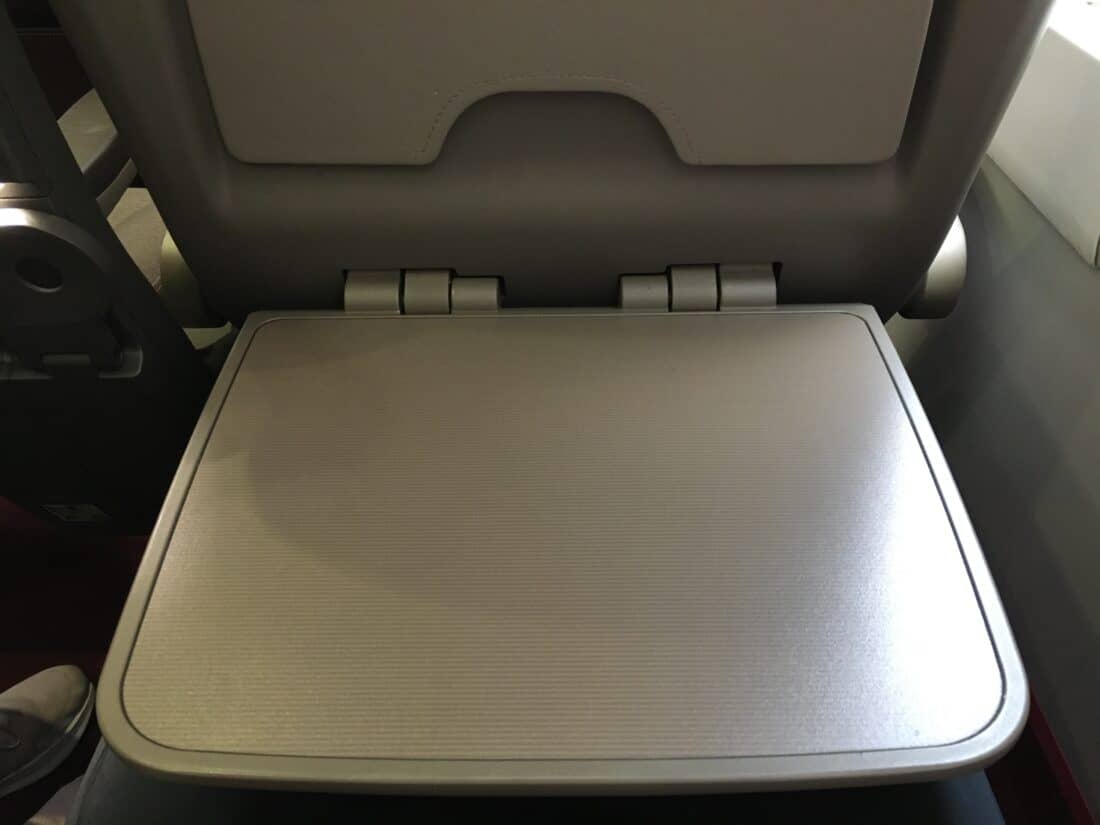
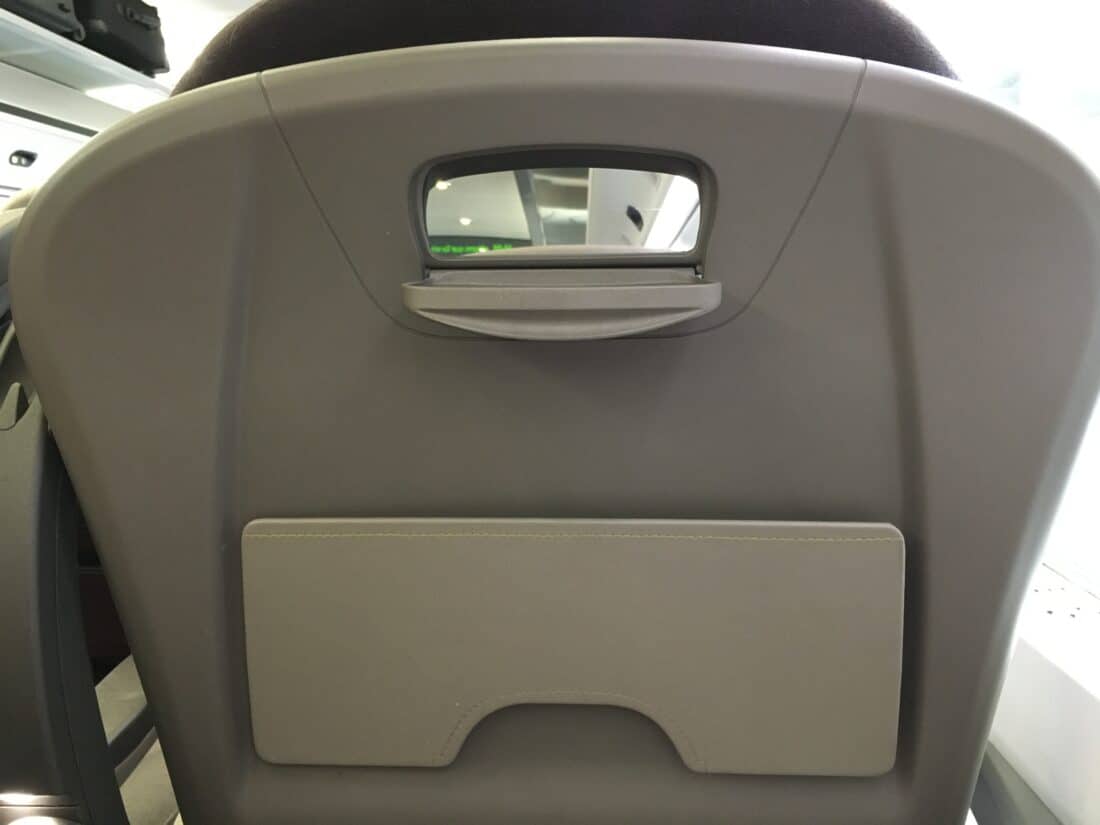
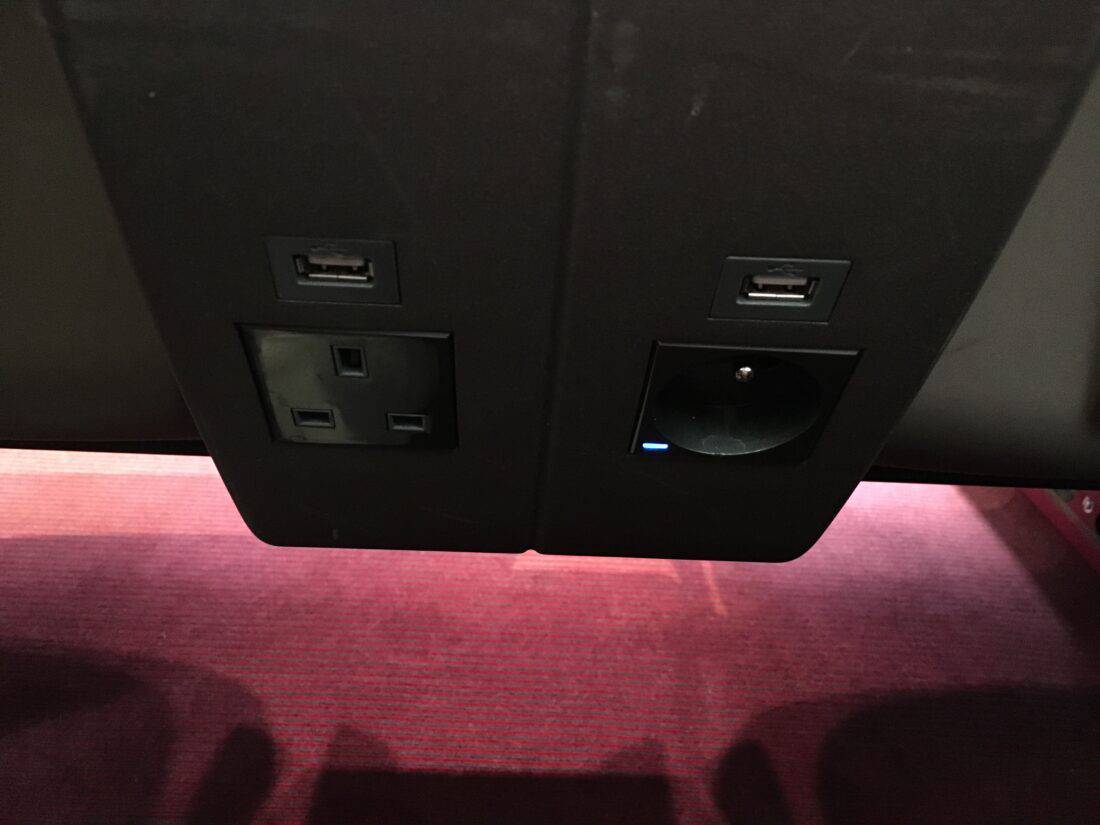
Since the service stood out significantly from my previous experiences (more on that later), I was curious about the condition of the restrooms. I was disappointed; they were just ordinary train toilets.
On the other hand, there were some positives with the complimentary newspapers and magazines offered on a stand at the end of the carriage. Among them was an issue of Vogue, which can easily cost €10 in retail. No expense was spared here.
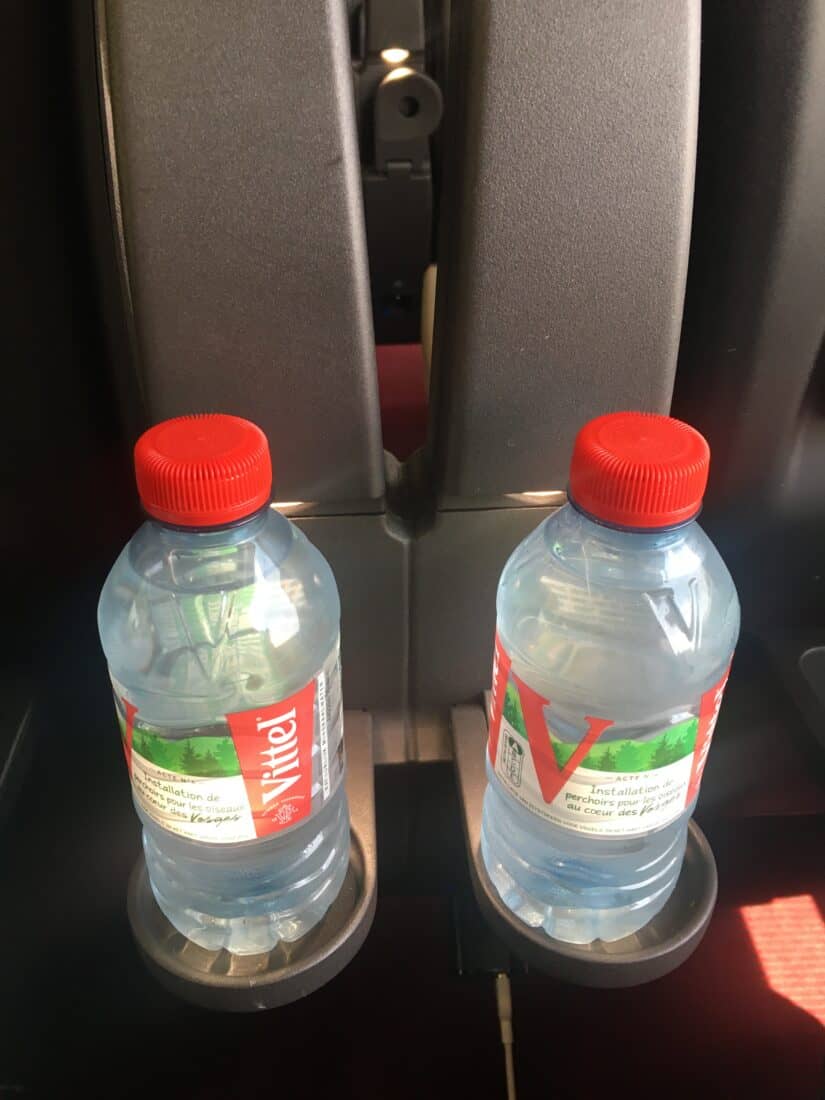
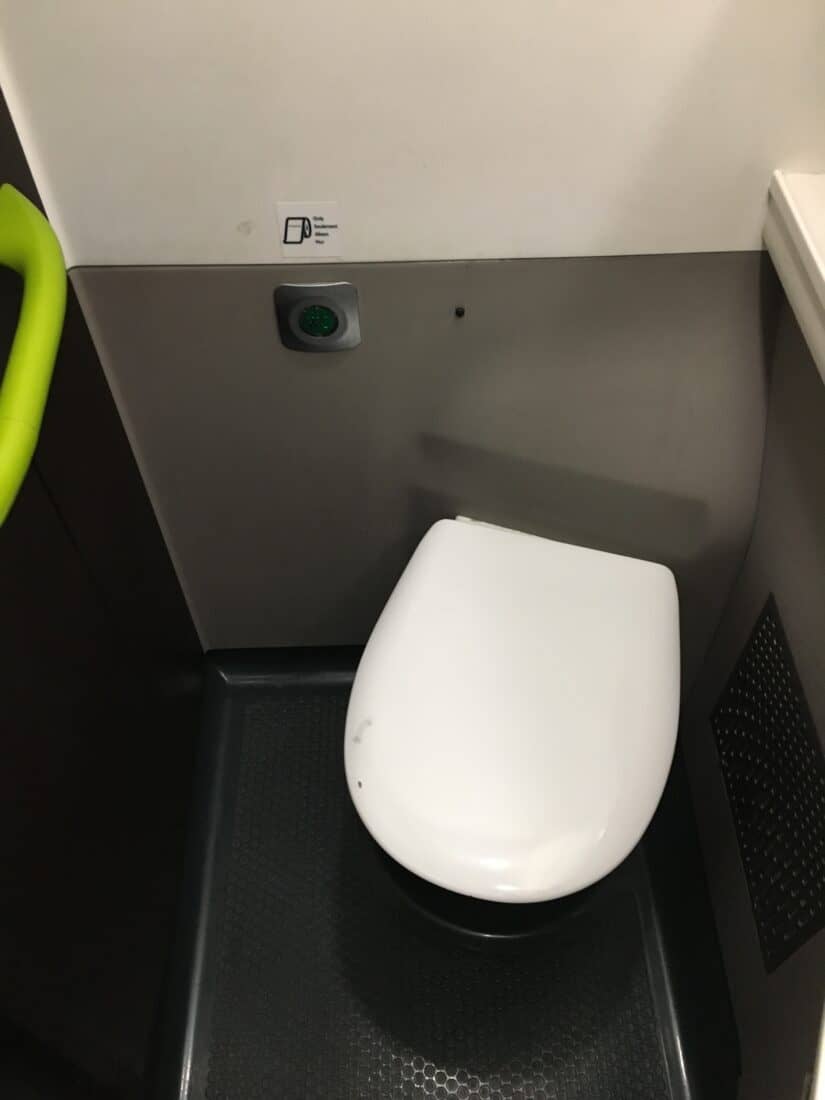
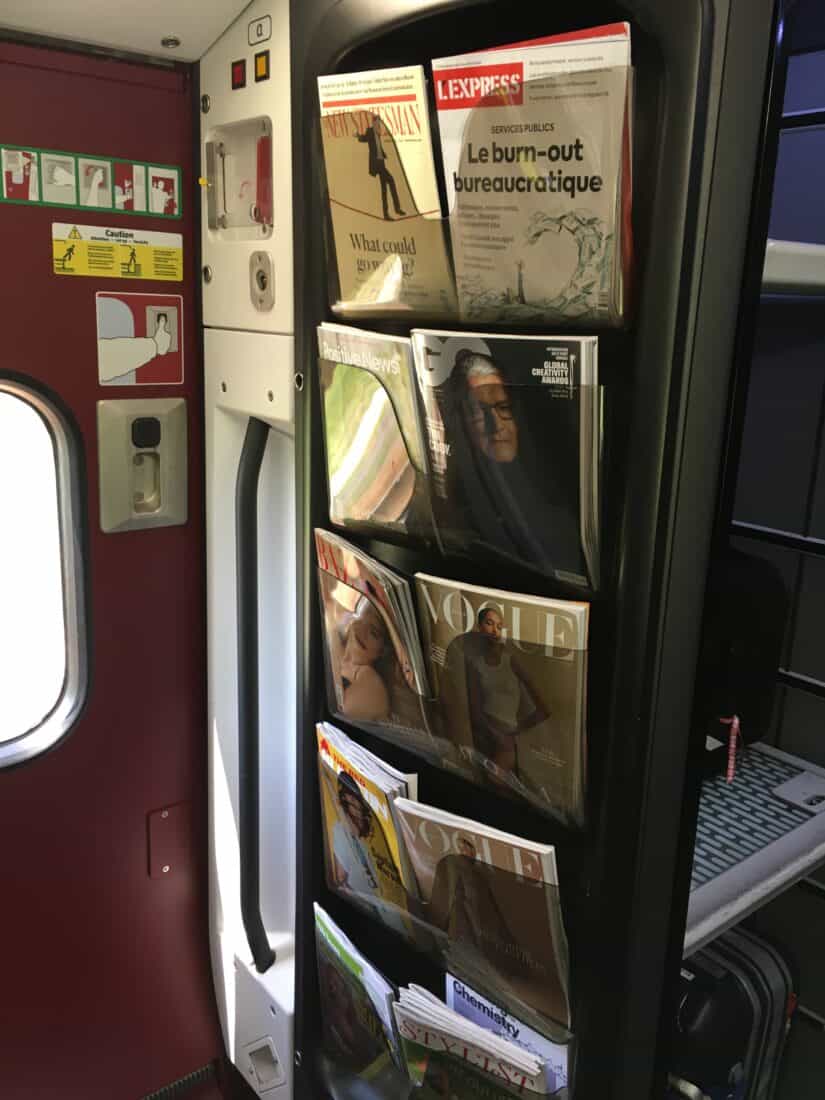
Food & Drinks
As mentioned above, a journey in Eurostar’s first class includes a meal. The menu can be viewed online, where one can enter the route and travel time to see the options. We had a choice between roast beef with bulgur salad or goat cheese with assorted vegetables. A roll, butter, and a dessert were also served. In this case, the dessert was a plum tart.
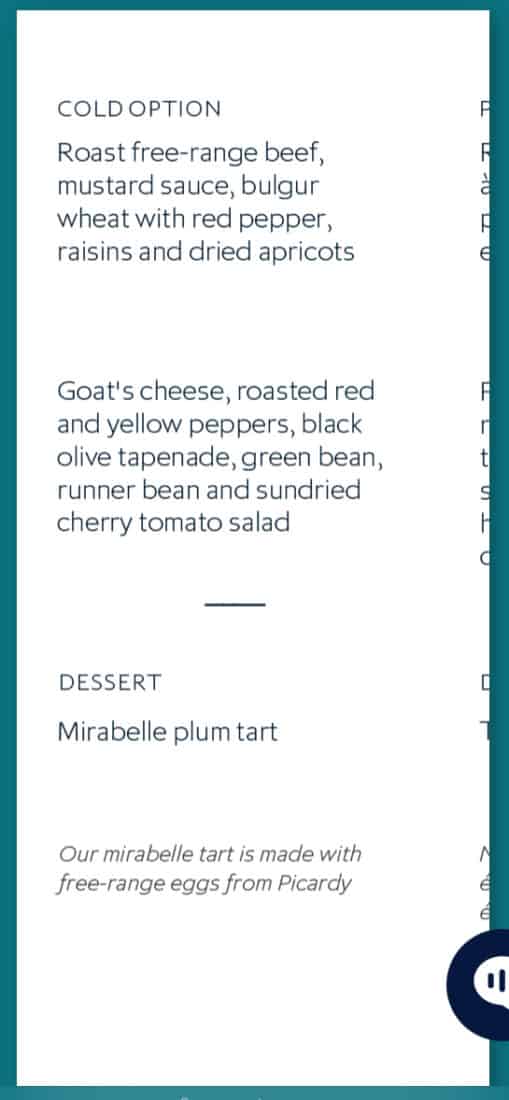
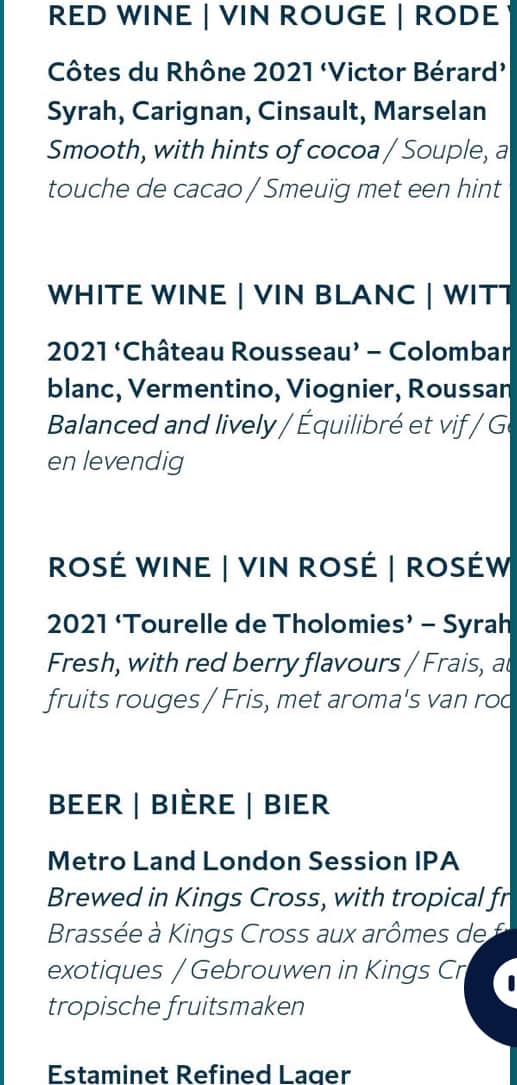
The roast beef was delicious, but the bulgur salad was a bit too sweet for my taste, although my fiancée enjoyed it. As an accompaniment, I chose one of the offered wines, which was served in a small bottle along with a glass. With the exquisite tart, I ordered a coffee with milk, but it very much tasted like instant coffee. Not a big deal, but a small disappointment considering the overall good quality up until then.
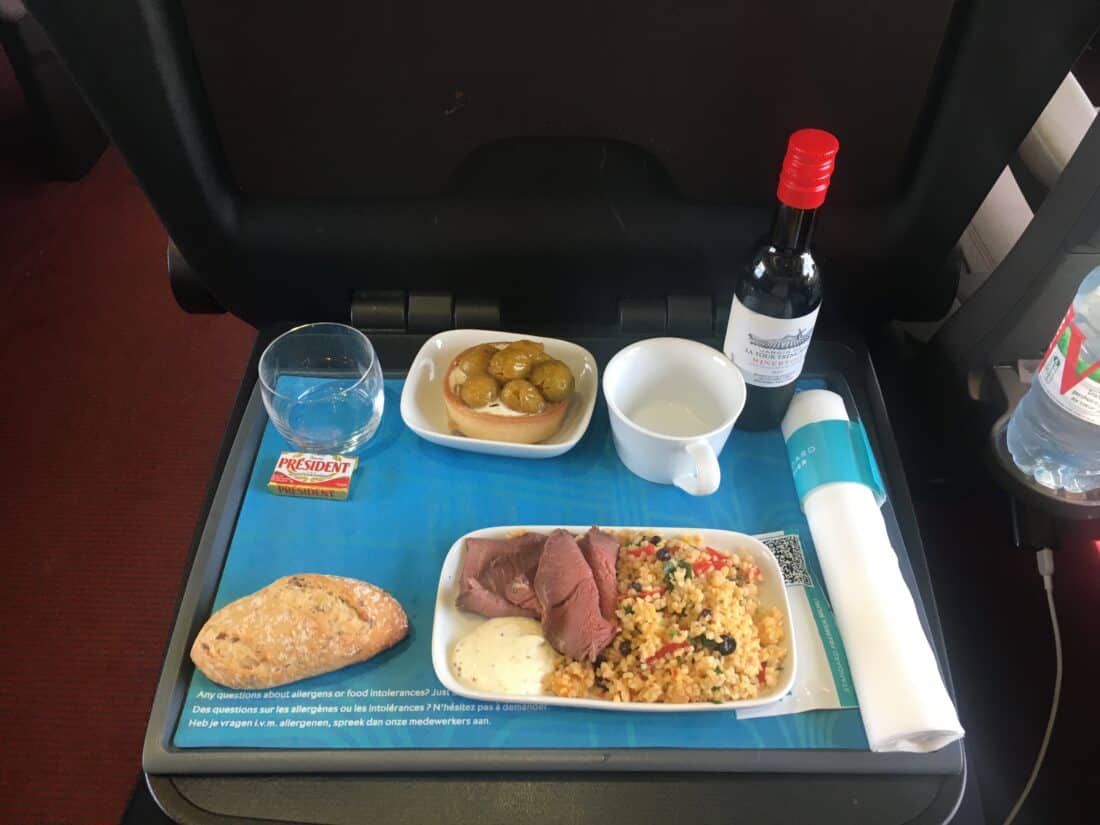
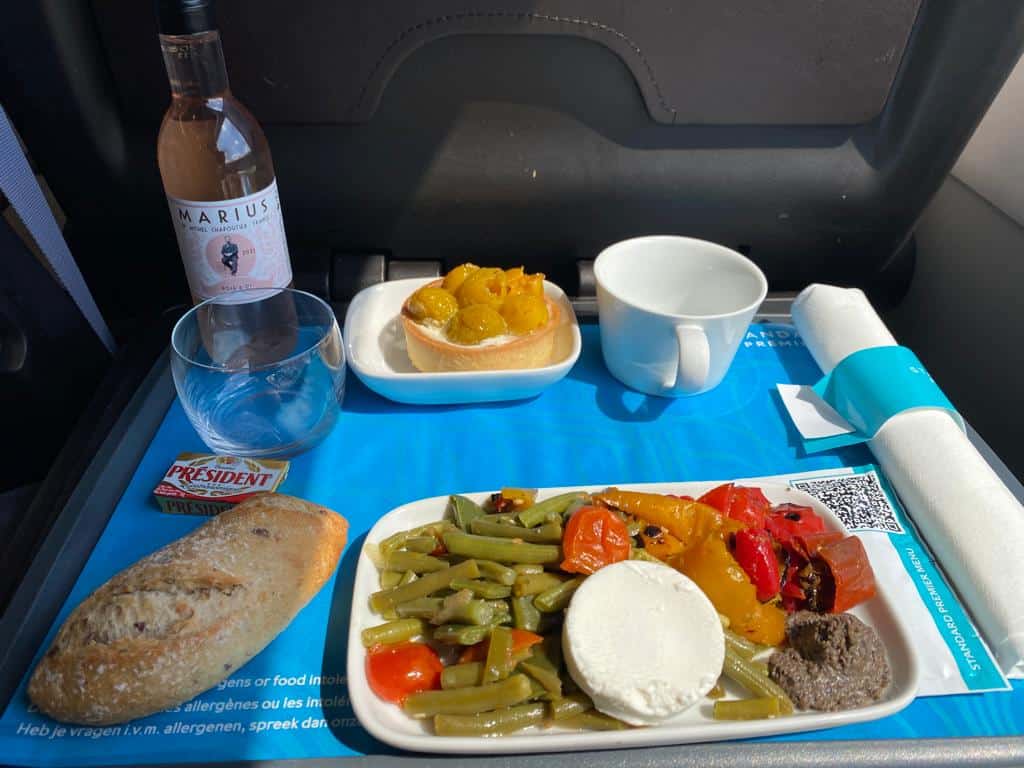
The diligent train attendants repeatedly offered additional drinks to the guests, and there was no hesitation in serving alcoholic beverages either.
Service
Our carriage was attended by three train attendants, whose name badges revealed their home country and which languages they spoke. One of them was the same lady who checked our tickets before boarding the train. They were all extremely friendly and dedicated, giving us no reason to complain. It should be noted that our carriage was only about half full, allowing the staff more time for individual passengers.
Travel Experience
The travel time on this route is between 2 hours and 15 minutes and 2 hours and 35 minutes, depending on additional stops and traffic. The route takes you north from Paris to Lille and then directly west towards the English Channel and the British capital. After a small loop around London, the train enters St. Pancras station from the north.
Despite reaching speeds of up to 240 km/h, the journey is pleasant and mostly smooth. The complimentary Wi-Fi worked without any issues for most of the time, except under the English Channel. Contrary to the company’s promise, we didn’t receive a signal there, but that was bearable.
While the fact that it is possible at all still amazes me personally, the journey through the Euro tunnel itself is nothing special. It’s just dark for 20 minutes. Interestingly, this section doesn’t cause noticeable pressure differences in the ears. The high-speed ICE train route from Frankfurt to Cologne has a more noticeable effect on the eardrums than the journey through the tunnel.
Arrival
Eurostar trains arrive in the international area of St. Pancras station in London. You walk to the end of the platform, then descend a staircase into the passenger area and are released into King Charles’ wonderland without further checks (in our case).
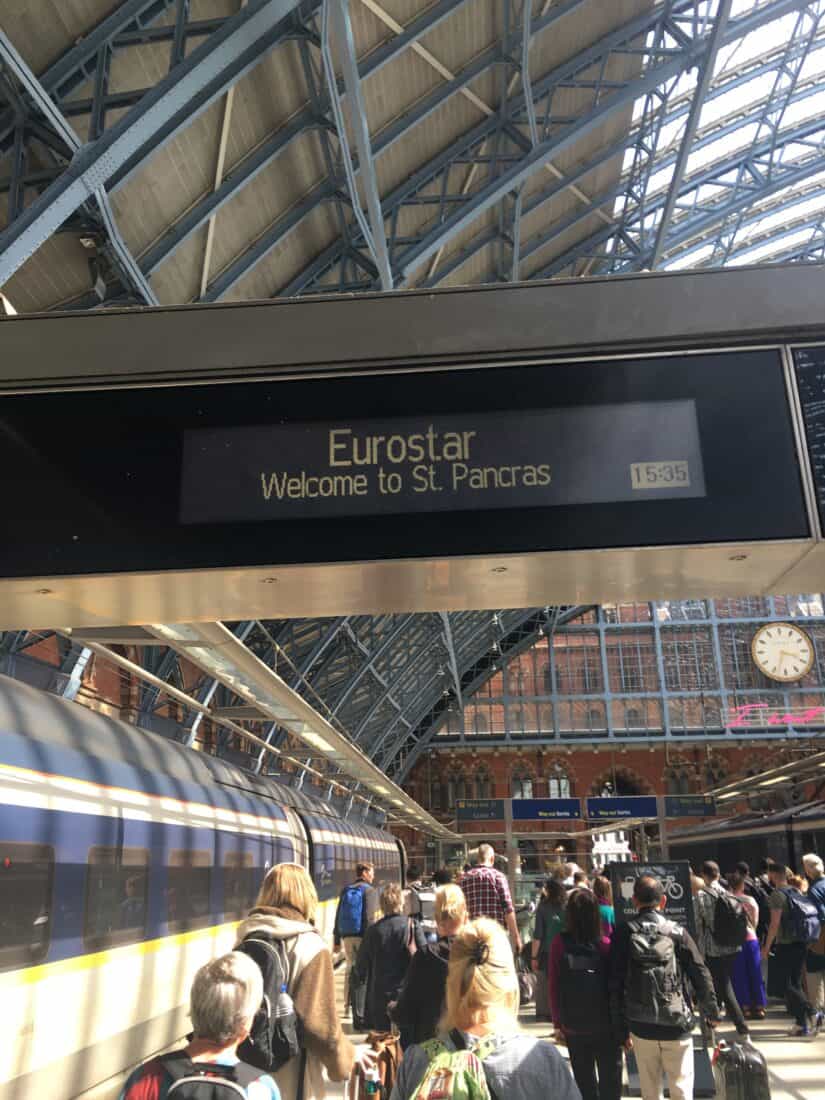
The station itself is not only remarkably beautiful from the outside and well-maintained on the inside, but it is also the largest rail hub in the British capital due to its proximity to King’s Cross station (less than a five-minute walk). An ideal starting point for any stay in London or even in Great Britain.
Conclusion
Eurostar’s premier class offers an above-average train experience. However, the journey through the Euro tunnel is not the most remarkable aspect. The included meal and beverage service stand out as a positive exception in terms of frequency and quality compared to other European train routes. The station procedures appear efficient and well-organized. The seats and cabin meet European standards.
With the high price, Eurostar has set a high bar for itself to offer a good product. Despite the predominantly positive impressions, the regular ticket price of over €100 for Premier Standard does not reflect a healthy balance with the provided service.
